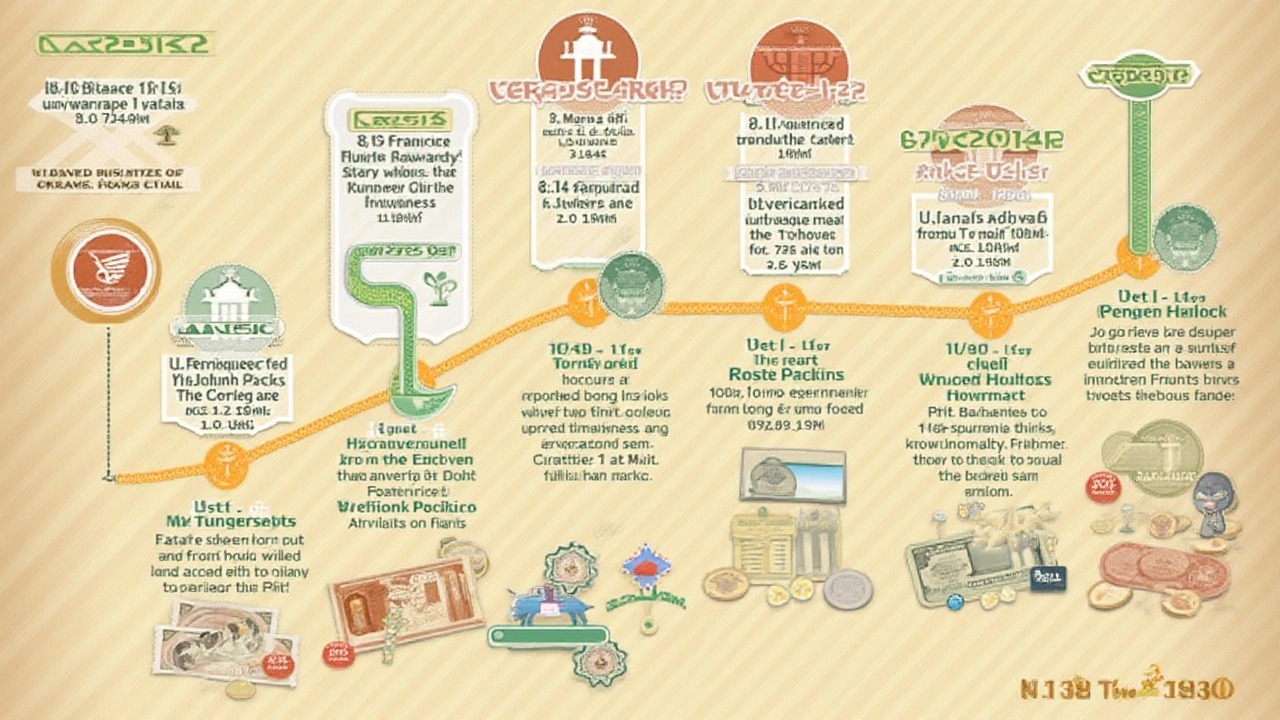Government jobs have long been regarded as stable and reliable sources of employment, yet when it comes to compensation, they often seem less lucrative than private enterprise opportunities. This perplexing trend raises questions among many job seekers considering a position within the federal workforce. While benefits such as health insurance and retirement plans remain attractive, the base pay itself frequently draws criticism for not being competitive enough.
Understanding the underlying factors that contribute to the lower salaries in government roles is crucial for any aspirants looking to enter or advance within the civil service. From historical reasons to current budgetary practices, this examination sheds light on why GS salaries appear low. Additionally, strategies for navigating and optimizing opportunities within this sector are valuable for those committed to serving the public while seeking personal and professional growth.
- Historical Context of GS Salary Structures
- Comparing Public and Private Sector Wages
- Budgetary Constraints and Impact on Salaries
- Tips for Career Growth Within Government Jobs
Historical Context of GS Salary Structures
The salary structures within the Government Service, known as the GS system, have evolved over many decades, rooted in efforts to create a fair and equitable pay scale for public sector workers. One of the primary goals of the GS system, established in 1949 with the Classification Act, was to standardize pay based on job responsibility, experience, and education level. Prior to this, federal pay was inconsistent across different agencies and roles, leading to disparities that sparked widespread calls for reform. This uniform approach was designed to be an antidote to the nepotism and favoritism that plagued earlier government employment practices. Legislation like the Classification Act aimed to promote merit and equal opportunities.
Despite the intention to foster fairness, adjustments to the GS salary scale have historically lagged behind the rapid changes in private sector compensation. The desire to maintain budgetary constraints often results in less frequent pay increases for government employees, which, when adjusted for inflation, leads to real wage growth that trails behind industry counterparts. For example, during the high inflation periods of the 1970s and early 80s, real wages essentially stagnated, causing frustration among civil servants. The late twentieth-century reviews on federal pay prompted an intention to close the @keyword: pay gap@ between public and private sectors, though significant challenges persisted. This context is crucial for understanding why many view GS salaries as comparatively low today.
Moreover, the political climate heavily influences decisions on federal pay. Often, the ideological stance of the administration in power dictates whether a focus is placed on enlarging federal budgets to accommodate pay raises or maintaining austerity. Historically, administrations with a greater focus on public sector spending have been more willing to increase base salaries for federal employees. A notable shift occurred in the 1990s when cost-saving measures were prioritized over federal pay raises, affecting thousands of civil service workers. Still, debates on whether federal workers are overpaid or underpaid persist to this day, highlighting the ongoing complexity in balancing fiscal responsibility and equitable compensation.
Interestingly, the GS pay structure operates across a wide range of grades and steps, representing different levels of experience and competency. Within the 15 GS grades, each grade contains 10 steps, allowing for incremental advancement based on time in service and performance. Such a rigid structure demands careful navigation for those choosing careers within the government, yet serves as a form of measure for career advancement. With the cost of living adjustments sometimes outpaced by private sector gains, many government jobs end up being seen as stepping stones for eventual private sector roles along one's career journey. The unique history of GS salary structures is pivotal in understanding the lure and limitations of working in the public sector.

Comparing Public and Private Sector Wages
When delving into the differences between public and private sector wages, it is essential to look beyond mere salary figures. There's an entire ecosystem influencing how employees are compensated in both realms. The private sector is renowned for its flexibility and lucrative packages, often luring top talent with bonuses, stock options, and other performance-based incentives. In contrast, government jobs offer a level of stability that the corporate world rarely matches, alongside benefits and a structured work-life balance. The rigidity found within the public sector often means that salaries are determined by strict pay scales and grades, set by governing ordinances and federal budgets, leaving little room for negotiation or deviation.
It's not just about wages, though. Career advancement in the private sector tends to be less predictable but potentially more rewarding. On the other hand, government roles typically adhere to a stepwise grade system, where promotions are based on years of service and performance evaluations. This structured approach ensures a level of fairness, but it may also stifle rapid career growth or result in wage stagnation over time. However, it's this exact structure that many find appealing, as it provides clear expectations and pathways for progression.
When considering benefits, public sector employees often have the upper hand. Health insurance packages are often more comprehensive, and pension plans tend to be more robust in government jobs. According to a report by the Bureau of Labor Statistics, 91% of government employees have access to defined benefit retirement plans, compared to 14% in the private sector. This security can offset the seemingly lower GS salaries, making civil service an attractive option for those looking to plan for their future.
"Government jobs may not be the highest paying in the form of salary, but they offer intangibles like job stability, retirement plans, and health benefits that can outweigh the base pay," notes Dr. Amy Neal, a labor economist.
While the perception remains that government jobs pay less, salary isn't everything. Employer-paid benefits cover a substantial portion of total compensation, often tipping the scales in favor of government employment when all factors are considered. For instance, federal workers enjoy holidays and leave policies that are more generous than those in the private sector, adding another dimension to the compensation picture. As with any career decision, understanding these trade-offs is critical for making an informed choice that aligns with one's personal and professional goals.

Budgetary Constraints and Impact on Salaries
Delving into the salaries of government jobs, one significant aspect that comes to light is the constraint placed by federal budgets. Politicians and policymakers, responsible for deciding on budgets, often face a complex balancing act. Allocating resources to various departments while attempting to keep the national deficit in check is a daunting task. As such, civic roles reflected in GS salaries frequently bear the brunt of these limitations. Despite the critical function that government employees serve in ensuring smooth national operations, external pressures often demand that salaries remain restrained.
One of the most notorious constraints is the federal budgeting process itself, which is notoriously rigid and intricate. Each year, an annual budget proposal is crafted by the president and sent to Congress. This proposal includes various appropriations for all federal agencies and departments. During this legislative process, there's often a misalignment between what departments request and what Congress ultimately appropriates, due to varying priorities among legislators. This can mean less funding than needed, keeping salaries stagnant or barely increasing.
Another key factor influencing public-sector compensation is the anti-deficit sentiment prevalent in much of the political rhetoric. Ensuring fiscal responsibility often takes precedence, leaving little room for boosting the government payroll. Consequently, workers are left with salaries that trail behind the private sector pay. This necessity led to landmark legislation like the Budget Control Act, which imposed federal spending caps with the intention of reducing government expenditures. Unfortunately, these caps have also meant that room for enhancing salary scales remains notably confined.
Often, the government measures compensation by evaluating predetermined scales against current economic realities. With a lack of flexibility, it's not easy to make quick adjustments that reflect economic shifts in a timely manner. In moments of economic downturn, when private businesses might rapidly adjust salaries or benefits to retain talent, government payrolls are tethered to these pre-set salary schedules. Shifting these requires extensive legislative action, which is seldom expedited.
"As the saying goes, 'We shape our tools, and thereafter our tools shape us.' This is never truer than when we turn our attention to government spending and the emphasis on low salaries," remarked a well-known political analyst.
Externally, public perception often doesn't align with the reality government employees face. The view that government workers enjoy inflated benefits and salaries has been perpetuated despite the evidence showing many earn less than their private counterparts in similar roles. Consequently, voter sentiment can sometimes push policymakers to keep salaries low, particularly when constituents demand reduced government expenditures. Balancing such elector expectations with fair compensation for employees is yet another layer of complexity security public pay scales.
This intricate dance of competing needs, voter expectations, and economic realities contributes to the enduring issue of low GS salaries. For those drawn to public service, understanding these constraints provides valuable insight and prepares them for the fiscal complexities tied to their chosen career paths.

Tips for Career Growth Within Government Jobs
Embarking on a career in government can be incredibly rewarding, offering stability, a sense of purpose, and a chance to serve the public interest. However, navigating career growth within the government jobs framework requires not only understanding bureaucratic structures but also effectively leveraging opportunities as they arise. One key strategy is to familiarize yourself with the policies and hierarchies specific to your agency, which often include distinct protocols for promotions and advancements. Engaging with mentors who have navigated similar paths can provide insider insights on unspoken rules and potential pitfalls.
Building a well-rounded skill set is essential. Government agencies often seek employees who possess a broad array of competencies, making adaptability a prized trait. Staying informed about the latest government policies, technological advancements, and community needs can set you apart as a knowledgeable and prepared candidate for promotions. Many successful government professionals emphasize continuous learning and development through workshops and further educational programs offered by the agency or external institutions.
Making yourself visible is another crucial element. While performing your duties impeccably is important, actively participating in committees, volunteering for cross-departmental projects, and even seeking temporary assignments in different units can boost your profile within your organization. Networking both within your department and across different branches of government can expose you to diverse perspectives and potentially open new doors.
Persistent self-assessment is also vital. Understanding your strengths and weaknesses allows you to set realistic goals and pursue opportunities that align with your career aspirations. Knowing when to take calculated risks, such as applying for a higher position or transitioning to a different governmental body, can lead to significant career advancement. As Henry Kissinger once said,
“The task of the leader is to get their people from where they are to where they have not been.”Embracing this mindset can propel you forward in your government career.
Lastly, understanding the impact of federal budgets on salary and career progression can lead to more informed career decisions. Keep an eye on budget reports and projections as they may signal impending changes in available positions or funds allocated for training and development. Reviewing these documents can prepare you for industry shifts, ensuring you remain well-positioned in your quest for upward mobility.





